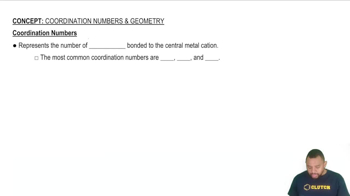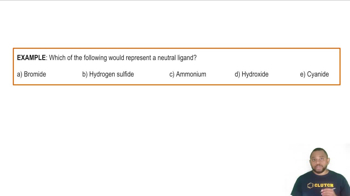Here are the essential concepts you must grasp in order to answer the question correctly.
Coordination Number
The coordination number refers to the number of ligand atoms that are bonded to a central metal ion in a complex. It is a crucial concept in coordination chemistry, as it influences the geometry and stability of the complex. For example, a coordination number of four typically leads to a tetrahedral arrangement, while six results in an octahedral geometry.
Recommended video:
Ligands
Ligands are ions or molecules that can donate a pair of electrons to a central metal ion, forming coordinate covalent bonds. They play a significant role in determining the properties and reactivity of coordination compounds. In the case of AlN, the nitride ion (N^3-) acts as a ligand, coordinating with the Al3+ ion and influencing its overall coordination number.
Recommended video:
Ionic Compounds and Charge Balance
Ionic compounds are formed from the electrostatic attraction between positively charged cations and negatively charged anions. In determining the coordination number of Al3+ in AlN, it is essential to consider the charge balance between the aluminum ion and the nitride ions. The overall charge neutrality of the compound dictates how many nitride ions can coordinate with the aluminum ion.
Recommended video:




